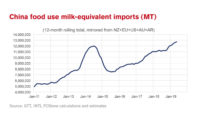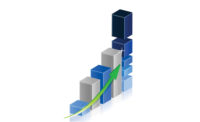We all talk about dairy demand as if we know what we’re talking about. If you are trying to sell cheese to an importer in Mexico and you sell them 10% more than you did last year, is that good demand? What if you had to cut your price in half from last year to make that sale? Is that still good demand?
A price-cut scenario
Given the negative impact of the pandemic on economic growth, I think we’re facing that price-cut scenario in order to find dairy “demand” on the world market during the second half of 2020.
In economic theory, there are two groups of variables that impact demand. The first group has only one variable: price. As the price goes down, the quantity demanded increases. This is called the law of demand.
The second group of variables includes everything else such as income, the price of substitute and complementary products, weather and something called “tastes and preferences,” which is really a catch-all category for the other things that economists can’t measure very well. This second group of variables “shifts” demand up and down, and then the price level fine-tunes the final quantity demanded.
In our modeling, economic growth has the biggest impact on long-run demand growth. And with the International Monetary Fund forecasting the worst global real GDP growth in decades, the models say “demand” is going to be pretty terrible.
That doesn’t necessarily mean global dairy imports are going to collapse; it just means prices will have to fall to keep product moving through the system. I’ve been asked many times to put together a graph showing the drop in global demand during 2009. The problem is global imports, on a milk-equivalent basis, were actually up 10.2% in 2009. But it took a 40% drop in annual average dairy prices to keep that volume moving.
With milk production expected to grow across the major dairy exporters in the second half of the year, there are going to be plenty of dairy products looking for a buyer, and it will probably take lower to sharply lower prices to find a buyer. The only caveat is that this recession is not playing out like recessions we’ve seen in the past.
During the first half of the year, massive fiscal stimulus from rich country governments cushioned the blow for consumers. We have seen stimulus packages in less developed countries as well, but so far they haven’t been nearly as generous as in developed countries. It’s also possible that the pandemic has created a change in tastes and preferences that would be positive for dairy demand and offset some of the negative income shift.
For dairy products such as nonfat dry milk that the United States has to export , the risk is to the downside for prices. It’s possible that continued stimulus and/or direct purchases by the U.S. government may be able to keep prices for other products such as cheese from crashing down to global price levels, but I’m pretty bearish on prices across the dairy complex, given the scale of the global economic problems we’re facing.



